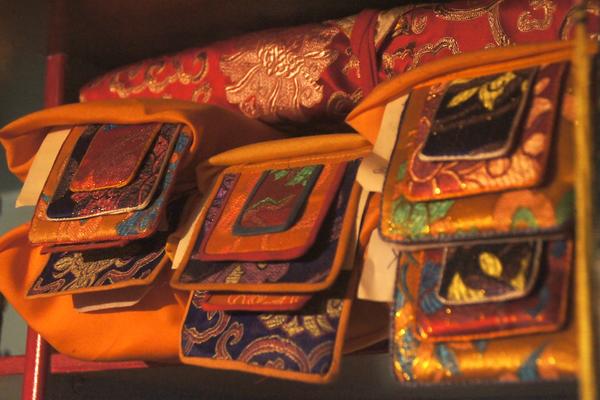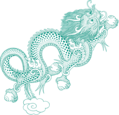Butön's Treasury of Precious Teaching: A Religious History Clarification of the Teaching of the Buddha
Bde bar gshegs pa'i bstan pa'i gsal byed chos kyi 'byung gnas gsung rab rin po che'i mdzod
Introduction
The author, Butön (Bu ston rin chen grub, 1290–1364), was a Sakya (Sa skya) scholar, well-known for his editing of the sNar thang catalogue of the collections of Buddha’s teachings, the Kangyur (bka’ ’gyur) and Tengyur (bstan ʼgyur). His Treasury of Precious Teaching, a history of Buddhism in India and Tibet, completed by 1326, was influential and respected by subsequent Tibetan scholars.
The history is structured in four sections, beginning with an explanation of Buddhism, followed by a history of its development in India, a short history of Buddhism in Tibet, and lastly a section cataloguing the translations of Buddhist texts to which Butön had access.
The third section has some material on events and attitudes regarding Tibetan law, particularly in the imperial period.
Download this resource as a PDF:

Sources
Bu ston rin chen grub. 1988. Bu ston chos ʼbyung. Beijing: Krung go’i bod kyi shes rig dpe skrun khang. BDRC: W1923
Bu ston rin chen grub. 1971. bDe bar gshegs pa’i bstan pa’i gsal byed chos kyi ʼbyung gnas gsung rab rin po che’i mdzod ces bya ba bzhugs so. In The Collected Works of Bu-ston. New Delhi: International Academy of Indian Culture, vol. 24 (ya), pp. 633–1056. (xylograph) BDRC: W22106
References
Kuijp, Leonard W.J. van der. 2013. Some Remarks on the Textual Transmission and Text of Bu ston Rin chen grub's Chos 'byung, a Chronicle of Buddhism in India and Tibet, Revue d’Etudes Tibétaines 25: 115–93.
Obermiller, E. 1931–32. History of Buddhism (Chos-ḥbyung) by Bu-ston. Leipzig: Harrassowitz.
Stein, L. and Ngawang Zangpo. 2013. Butön's History of Buddhism in India and its Spread to Tibet: A Treasury of Priceless Scripture. Boston: Snow Lion.
Szerb, János. 1990. Bu ston’s History of Buddhism in Tibet. Vienna: Verlag der Osterreichischen Akademie der Wissenschafter.
Outline and Extracts
The Tibetan text and headings are taken from the 1988 (Beijing) edition, with reference also to the 1971 xylograph edition.
Section 1: Showing a way for teaching and studying [Buddhism], and its benefits (pp. 3–51)
Section 2: In general, how Buddhist doctrine arose in the world (pp. 52–179)
Section 3: In particular, showing the manner in which Buddhist doctrine came to Tibet (pp. 180–211)
Section 3, Part 1: Presentation of the early spread (snga dar) of the Buddhist teachings (pp. 180–193)
This part begins with the origins of the Tibetan people from the exodus of King Rūpati from India. He crosses the Himalayas with female warriors. The legend of the origins of Tibetan peoples from the mating of a monkey and a rock ogress is also mentioned.
A discussion of the origins of Tibetan royalty ensues, leading to the reign and descendants of Nyatri Tsenpo (gNya’ khri bTsan po), regarded as the first Tibetan king.
When the historical sequence of kings comes to Songtsen Gampo (Srong brtsan sgam po), the author describes how the son of Tonmi Sambhota (Thon mi sam bho ṭa) is sent to India to study. He creates a script and composes treatises, which the king studies during a four-year retreat.
[p. 182]
དེའི་ཚེ་བོད་འབངས་ཀྱིས་རྒྱལ་པོ་ལ་གཤེ་བ་གསན་ནས་དགེ་བ་བཅུའི་ཁྲིམས་བཅས་ཏེ་བོད་རྣམས་ཆོས་ལ་བཀོད་པས་མིང་སྲོང་བཙན་སྒམ་པོར་གྲགས་སོ།
At the time, since the people were listening to abuse about the king, he created laws based on the ten virtues. Then the Tibetan people were established in the dharma and he was known by the name Srong btsan sGam po (straight, powerful, profound).
Several generations later, when Tri Song Detsen (Khri srong lde btsan) is still a child, his father, the emperor, dies.
[p. 184]
རྒྱལ་བུ་ཆུང་བས་བློན་པོ་རྣམས་ཀྱིས་ཆོས་ཁྲིམས་བཤིག་སྟེ་ཆོས་བྱེད་པ་རྣམས་སྤྱུགས་པར་བྱས།
Because the prince was a child, the ministers demolished the religious law (chos khrims) and banished the Buddhist practitioners.
A resurgence in royal sponsorship of Buddhism follows, until the reign of Ralpachan (Ral pa can), when royal favouritism leads to anti-Buddhist activity by resentful ministers. After the emperor’s assassination there are extensive difficulties for Buddhists during the reign of Langdarma (gLang dar ma; Dar ma ’u dum btsan).
[p. 191]
དེས་རབ་ཏུ་བྱུང་བ་ལ་ཆབ་སྲིད་ཕུལ་བས་བློན་པོ་ནག་པོ་ལ་དགའ་བ་རྣམས་ཁྲོས་ཏེ་ཆོས་ཁྲིམས་
བཤིག་པར་ལྐོག་ཆད་བྱས་ཏེ་ལྷ་སྲས་གཙང་མ་རབ་ཏུ་བྱུང་བ་གྲོ་མོར་སྤྱུགས། བཙུན་མོ་ངང་ཚུལ་མ་
དང་། བནྡྷེ་ཆེན་པོ་དཔལ་གྱི་ཡོན་ཏན་ནལ་བཤམས་ཞེས་ཕྲ་མ་བཅུག་སྟེ་བནྡྷེ་ཆེན་པོ་བཀུམ། བཙུན་མོ་ལྕེབས། བཙོན་པོ་དགུང་ལོ་སོ་དྲུག་ལྕགས་མོ་བྱ་ལ། དབའ་རྒྱལ་ཏོ་རེ་དང་། ཅོ་རོ་ལེགས་སྒྲ་
གཉིས་ཀྱིས་ཞལ་ལྟག་པར་བསྟན་ཏེ་བཀྲོངས་སོ།
།དེ་ནས་བཙན་པོ་གླང་དར་མ་འུ་དུམ་བཙན་ལ་ཆབ་སྲིད་གཏད། ཐེའུ་རང་དབའ་རྒྱལ་
ཏོ་རེ་ནང་བློན་དུ་བསྐོས། བློན་སྣ་ནམ་རྒྱ་ཚ་ཁྲི་གསུམ་ལ་སོགས་ཀྱིས་ཆོས་ཁྲིམས་དང་འགལ་
བ་མང་དུ་བྱས།
Thus, because ruling power (chab srid) had been offered to the monks, ministers who were inclined to evil became angry. They made a decision in secret to destroy the religious laws (chos khrims). Prince gTsang ma, who had become a monk, was exiled to Gro mo. Rumours circulated about Queen Ngang tshul ma and the grand monk dPal gyi yon tan having a secret sexual liaison. The grand monk was murdered and the queen committed suicide. The emperor (Ral pa can) at age thirty-six, in the Iron Bird Year, had his head twisted backward by dBa’ rgyal to re and Co ro legs sgra, and so was killed.
Then Emperor gLang dar ma, U dum btsan, was entrusted with ruling power. The devilish (the’u rang) dBa’ rgyal to re was appointed Minister of the Interior and the three ministers, sNa nam, rGya tsha, and Khri, and others, committed many acts that were contrary to the religious law (chos khrims).
Chapter 3, Part 2: Presentation of the later spread (phyi dar) of Buddhist teachings (pp. 193–206)
Chapter 3, Part 3: A list of the paṇḍitas and lo tsā bas (translators) who spread the true doctrine in Tibet (pp. 206–11)
Chapter 4: Enumeration of translations of the Buddhist doctrine
Chapter 4, Part 1: The sῡtras (pp. 212–53)
Chapter 4, Part 2: The tantras (pp. 253–317)




